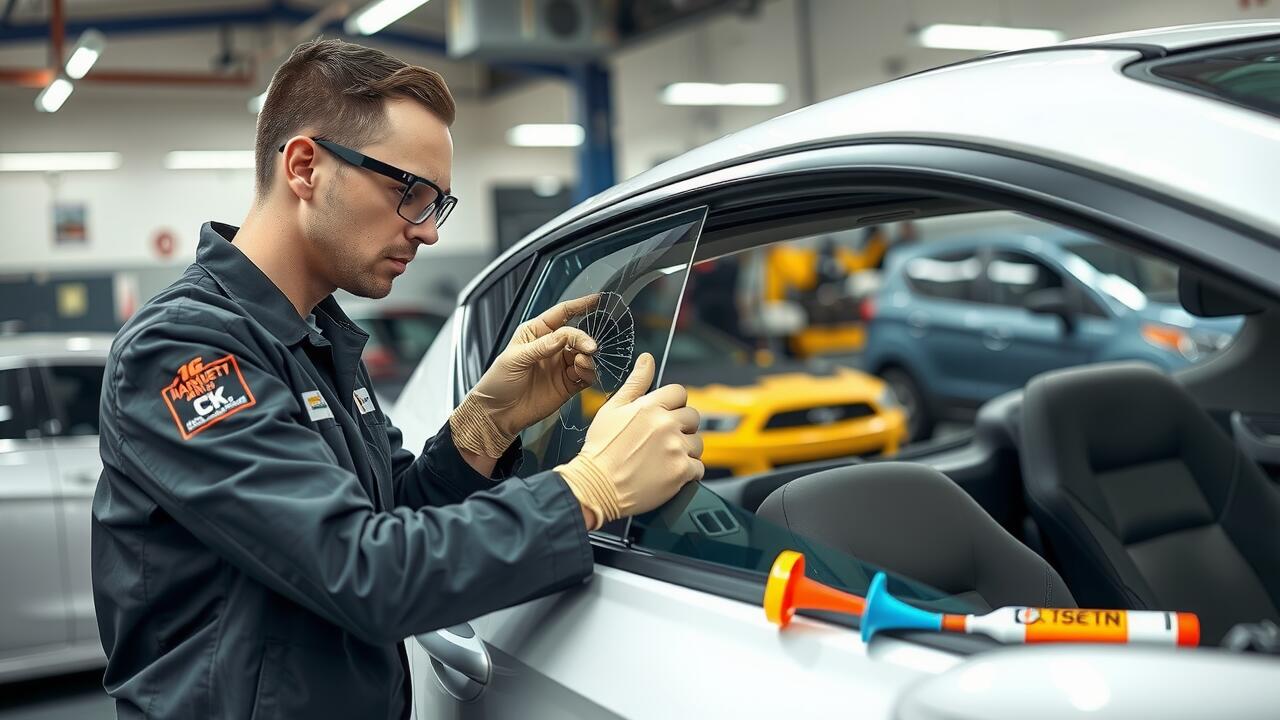
Table Of Contents
Examining the Window Switch
Begin by inspecting the window switch, as it plays a crucial role in controlling the window's movement. Look for any visible signs of damage or wear. Sometimes dirt and grime can build up around the switch, leading to malfunction. Remove the switch cover with care and check for loose connections or corrosion. A clean contact can often resolve issues without needing replacement. If there are specific malfunctions such as the switch not clicking or feeling stuck, it might require replacement.
Next, perform a basic functional test of the switch. Use a multimeter to check for continuity, ensuring that pressing the switch generates a response. If you discover the switch is faulty but don’t want to replace the entire assembly, consider a Side Window Repair kit. These kits often include replacement switches and covers specifically designed for common issues. Testing the switch thoroughly will help rule out this component before moving on to the window motor or regulator.
Testing the Switch for Faults
To test the window switch for faults, begin by removing the switch panel from the door. Use a flat-head screwdriver to gently pry it up, ensuring you don't damage any clips. Once the panel is removed, disconnect the wiring harness from the switch. A multimeter can be particularly useful at this stage. Set it to continuity mode, and test each terminal on the switch. If there is no continuity when you press the button, the switch is likely faulty and will require replacement.
After confirming that the switch is malfunctioning, you may want to consider a Side Window Repair. Replacing a faulty switch is typically straightforward and can prevent further complications. With a new switch, you should experience a smoother operation of the window. If the replacement does not solve the issue, it may be time to look at other components, such as the window motor or regulator.
Inspecting the Window Motor
Inspecting the window motor is crucial when dealing with a window that won't go up. The motor is responsible for powering the window regulator, which in turn raises and lowers the window. Start by listening for any sounds when you attempt to operate the window. A clicking sound might indicate that the motor is receiving power, but it’s unable to function properly due to internal issues. However, if there are no sounds at all, it could suggest that power is not reaching the motor.
To perform a more thorough assessment, you can disconnect the motor from the window regulator and test it directly with a multimeter. This will help you determine if the motor itself is defective. If you find that the motor is faulty, it will need to be replaced as part of your side window repair. Ensuring that the motor functions correctly is essential before proceeding with any other components in the window system.
Signs of a Malfunctioning Window Motor
A malfunctioning window motor can exhibit several signs that indicate a need for attention. If you hear a grinding or clicking noise when attempting to operate the window, this may suggest that the motor is struggling to function properly. Additionally, if the window moves slowly or becomes unresponsive, it is a clear sign that the motor could be on its last legs. These symptoms may lead to the need for Side Window Repair, especially if the situation worsens over time.
Another indicator of a faulty window motor is irregular movement of the glass. If the window only moves in fits or jerks rather than smoothly, this erratic behaviour typically points to issues with the motor or its connections. Frequent stops during operation can be frustrating and may result in the window failing entirely if not addressed. In such cases, it is advisable to examine the motor’s condition thoroughly to determine if repair or replacement is necessary.
Assessing the Window Regulator
The window regulator plays a crucial role in controlling the movement of the window. If the window is stuck in one position or operates erratically, it's important to assess the regulator for any signs of damage or wear. These components can become faulty due to regular use or environmental factors, potentially leading to the complete failure of the window mechanism. A visual inspection can reveal issues such as bent tracks, broken cables, or worn gears, which may indicate the need for a replacement.
If faults are identified with the window regulator, you should consider the option of Side Window Repair. Repairing the regulator can save time and money compared to replacing the entire window assembly. In some cases, simply lubricating moving parts or realigning the mechanism can restore functionality, but complete replacement may be necessary if the damage is severe. Understanding the signs of a failing regulator can aid in making informed decisions about repairs and maintenance.
Understanding When to Replace the Regulator
If the window regulator exhibits consistent issues such as grinding noises or the window becomes stuck in the fully open or closed position, replacement may be necessary. A regulator that does not respond to the window switch can indicate mechanical failure, impacting the overall function of the electric window system. Regular use and harsh conditions can lead to wear and tear, making it crucial to identify these signs early.
Side Window Repair is often more cost-effective when handled promptly. Delaying the replacement can lead to further damage to the window components, possibly resulting in more extensive repairs. Evaluating the regulator’s performance is essential to ensure that the electric window operates smoothly and reliably.
FAQS
What should I do first if my electric window won't go up?
Start by examining the window switch for any faults. Ensure that it's functioning correctly by testing it to see if it’s the source of the problem.
How can I test the window switch for faults?
To test the switch, use a multimeter to check for continuity. If there’s no continuity when the switch is pressed, it may need to be replaced.
What are the signs of a malfunctioning window motor?
Common signs include unusual noises when the switch is pressed, a slow-moving window, or the window not responding at all when the switch is activated.
How do I know if I need to replace the window regulator?
If the window motor is functioning but the window still won't move, it could indicate a problem with the window regulator. Check for any visible damage or bending in the regulator; if present, replacement may be necessary.
Can I fix the electric window myself, or should I take it to a professional?
Depending on your comfort level with automotive repairs, you may be able to fix it yourself by following the troubleshooting steps outlined. However, if you're unsure or the issue seems complex, it’s advisable to consult a professional mechanic.
















































